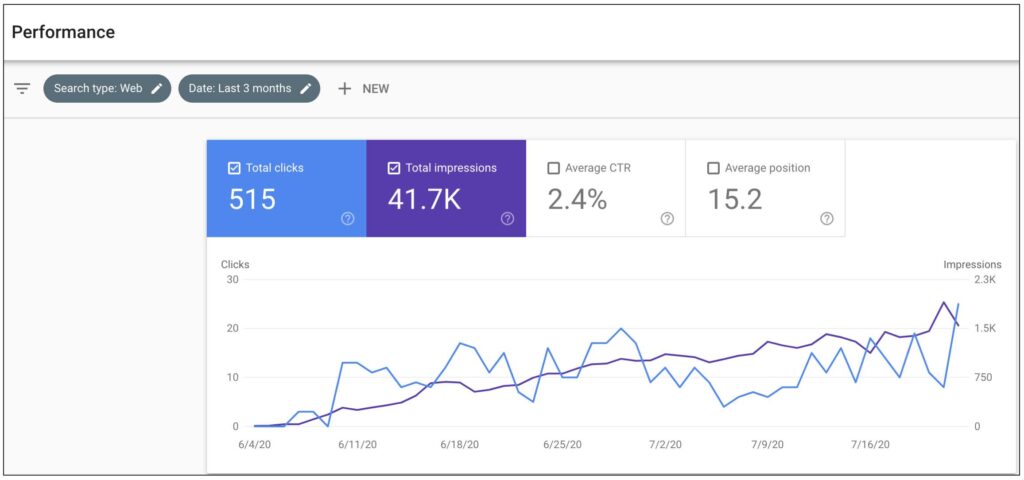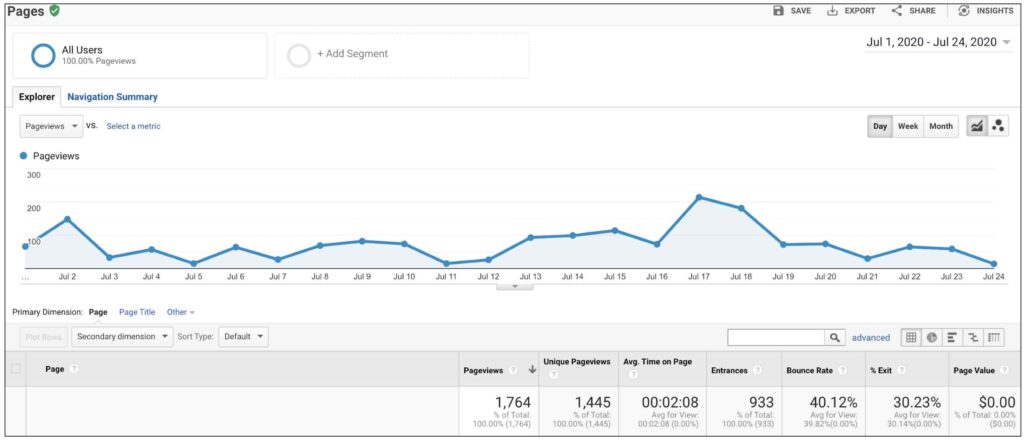Consultant Chris Ayliffe from Arctic Meta writes for Union Digital.
Generally, when most people hear the term ‘SEO’ in passing, they regularly assume there are either a load of hidden technical tricks into turning Google into your best friend, or that it is a skill far too complicated to pick up.
However, frequently when I speak to clients about the basic rules of thumb to keep your website in a strong position to rank well, they all share a similar response of “it’s not that complicated”.
It really isn’t that complicated. When you boil it down to the main cogs that turn the wheels to help you rank better over time, it simply becomes common sense and gives you another couple of checkboxes to tick when you’re working on your own business.
The main part of it which keeps SEOs and digital marketers on their toes is the rapidity of change.
For example, in my last blog for Union Digital, I spoke about the main things digital marketers need to know from Google’s recent BERT algorithm update. With regular updates from Google, as SEOs and Digital Marketers we need to keep reading, keep asking questions and adapt strategies to new concepts.
Nowadays, the added importance of user experience (UX) to SEO is something I wrote about as part of the top trends for SEO in 2020, and it’s never been more prevalent to understand than today.
In this blog, I’m going to explain to you why UX is a vital element of SEO, how you can measure the success of it for your website, and how you can set your website up for success.
What is UX?
UX is defined as the overall experience of a person using a product such as a website or computer application, especially of how easy or pleasing it is to use.
Frequently, when it comes to web builds, designers, SEOs and digital marketers will work together to deliver a visually pleasing, simply usable and logically structured website to help your target audience reach their goals.
Now, this will vary based on the purpose of your website. For instance, if you’re an e-commerce platform it’s generally pretty obvious that this is to help customers make online purchases. Whereas, if you’re a public sector traffic reporting website, it’s how easily customers get traffic updates to plan their journeys accordingly.
Basically, if you create an overly complex website which doesn’t retain the attention of your users, then you’re not going to help anyone (including yourself!)
Why is UX a vital element of SEO?
Google’s aim is the following:

Basically, Google wants to give you the information you’re searching for quickly, by understanding your search queries, your intent and ensuring it’s accessible and useful.
Often the problem with an idealistic vision from Google, is the level of corruption that usually larger entities have always tried to do to simply ‘game the system’.
For instance, when big companies figured out the ranking of content was majorly focused on keywords, what’s now commonly known as keyword stuffing, was rife across the internet.
And, later, when backlinks were understood to be integral parts of the Google algorithm, black hat tactics of buying links meant the companies with the deepest pockets, not the best and most useful content were starting to rank higher.

Though Google is now much more adept at spotting these infringements and penalising the SEO cheaters around us, it forces them to regularly update their algorithm to help consistently promote the most useful content that provides the information users are searching for.
And, it’s for this reason that UX has now been introduced as a measurement in their algorithm to understand whether a page and source is useful and accessible to the user.
Google breaks the measurement of UX into three areas:
- Your Search Engine Results Page (SERP) results
- Your websites landing pages
- Pages users visit after clicking on your website
Explaining these elements in separate parts, Google looks at how impactful your SERP result is at attracting users to click on your link. This includes your title tag, meta description, URL structure and any schema or structured data which appears.
Example of a SERP
The simple measurement in this section of the algorithm is if your click through rate (the number of people who see your link and click on it) is low, then clearly you’re not getting the vote of confidence by the user. If you can’t get clicks, then you fail to meet the useful criteria and thus will be ranked lower.??When it comes to your landing page, you want to make sure it’s well structured, clearly defined and accessible to all users. This comes from the likes of a logical headings structure, imagery and alt text, obvious call to actions and easy readability amongst a plethora of other aspects which help set up your pages better for SEO.
Google, will then measure how long your users actually spend on the page as a measurement of success. They use the simple metrics of Average Time on Page and Bounce Rate to see if your content is engaging users (e.g. are they reading and exploring your webpage?) and how often they are then leaving your website.
Lastly, Google also monitors which pages users then click on after visiting your webpage. If they’re following your internal links to check out more of your website, then fantastic; Google will deem this as a successful meeting between the user and your information. However, if they leave your website, then it makes Google think the opposite.
The aim of the game is to get people to click onto your webpages, keep them engaged and construct simple and effective user journeys to keep them on your website. Sounds easy right?
How can you measure the success of UX on your website?
There are a number of ways you can check on the performance of each of these 3 main UX elements for SEO. But, for the purpose of this blog I’m going to keep it simple and just focus on Google Analytics and Google Search Console.
1. Measure your SERP results performance
When it comes to keeping on top of your SERP performance, Google Search Console should be your ‘go to’ tool. It’s free to and very simple to use which is a big plus when it comes to pulling and analysing valuable data.
In the ‘Performance’ section, you’ll have an overview of how impactful your website is doing in organic search. For instance, you can analyse the number of clicks, impressions, the average click-through rate, and your average position in search results over time.

This gives you the ability to quickly understand if your performance is heading in the right direction or not.
However, for the purpose of UX, you’ll want to focus on analysing the click-through rate (CTR) metric.
You can either simply check your website’s snapshot average for this metric and compare it to historical data to see if your website’s average CTR is trickling up and improving to attract users to click on your pages in organic search, or you can look at each page separately.
Google Search Console makes this labour incredibly easy. Simply scroll down from the average metrics and you can check the movement of each of your individual pages CTR over time. You can then easily use this data to spot trends in terms of what structures for you title tags, URLs and meta descriptions are most and least effective to drive users to click.
Then you can apply the same logic for the pages with a high CTR to those which have a low CTR. So, through simple and quick analysis you are able to understand success and apply a data-led solution to improve the ability of your wider pages to attract users in organic search results.
Make sure to keep monitoring this regularly. I usually check and make tweaks where needed on a monthly basis. Often neglected data over the longer-term can lead to dropping CTRs.
This is part one of the battle complete.
2. Measure your website landing page performance
We all know that overall web traffic largely revolves around peaks and troughs, but analysing the UX elements on a page by page basis is a little bit different.
In this part of the algorithm you can go incredibly deep in your analysis. For example, plenty of organisations now employ highly sophisticated technologies such as ‘Hotjar’ to fully understand users movement across all key pages, as well as monitor the main successes and pain points in user journeys.
However, for the purpose of simplicity and accessibility to all, I’m going to focus on the free and fantastic source of Google Analytics, which more or less every webmaster these days at least has set up for their website.
The main on-page metrics I suggest using to monitor UX performance are average time on page and bounce rate. You can find these metrics by heading over to Behaviour – Site Content.

Much like with Google Search Console, you can either simply look at snapshot average performance of these metrics for your whole website, or you can dig a little deeper at the page level.
For instance, I know that with my website my blogs targeted for search engine specific queries and topics drive most of my organic search traffic. This means I focus on analysing the performance of these pages.
A growing average time on page metric indicates that the user is finding your content useful and its meeting the requirements of their search query. Often, it’s the smallest tweaks here which make all the difference such as font, font size, page speed and image loading. You want to make the experience simple, easy and relevant so the users stay on your page longer – the longer they stay on your page the higher ranked your page will become.
Secondly, the bounce rate is incredibly important to keep on top of. It basically indicates how many people left your page and didn’t stay on your website. On most occasions, the higher the bounce rate, the less helpful your web page was.
In simplicity, you want to monitor your main organic search driving pages to help bolster high average time users spend on your pages and decrease the bounce rate. It’s a finger to the pulse to see how effective your content is for users.
3. Measure the performance of retaining website visitors
The final element to keep on top of is how successful your webpages are at retaining users on your website. The most effective this is, the higher the confidence Google has in your website as a valued and helpful source for your targeted user queries. It supports Google’s specific E-A-T algorithm and will bolster how your website is perceived in terms of expertise, authoritativeness, and trustworthiness.

To see how effective your website is for this, the user flow analysis within Google Analytics should be your main source to check (Audience – User Flow).
Here, you can delve into the length and breadth of the main user journeys from organic search on your website. For instance, you can see which call to actions (CTAs) led to further page clicks, how many users left your site at certain points (drop-offs), and which pages are deriving the most success.
The aim of the game for an SEO is to optimise this journey to keep users on your website for as long as possible. You want them to enjoy their first piece of content and check out more of your pages. This highlights to Google that you are clearly an extensive source of information meeting and surpassing the needs of the user, and you should be ranked highly to support other users.
By regularly checking the data you will spot trends over time; and through testing, you’ll see which tactics prevail better than others. It’s not a simple and short task to complete, but it’s vital for improving or sustaining your page rankings.
How can you set up your website for UX success in SEO?
When reading through this blog, you may have gathered that each of these elements impacts the others. If so, you’d be right!
With poorly constructed title tags, meta descriptions, and URL structures users won’t find your content. With confusing and poorly structured content that doesn’t entice the user to stay on your page, they will likely leave your website pretty quick. And without an established set of user journeys, it’s incredibly unlikely users will explore more pages on your website.
This is why you need to take it back to basics. Start by crawling your website and analysing your title tags, meta descriptions and URL structures. Once done, try to apply the following rules consistently across all of your webpages:
- Title Tag Structure – Primary Keyword – Secondary Keyword – Brand Name (maximum of 60 characters).
- Meta Description Structure – Target Keywords – Unique Selling Point (USP) – Call to action (maximum of 155 characters).
- URL Structure – Domain – Site Section (e.g. Blog) – Primary Keyword (make sure it’s logical).
Often with SERPs, it’s worth testing a number of tactics and see which is most effective. For instance, when I’ve worked in e-commerce the simple introduction of ‘best’ and ‘top’ across all the product category pages title tags led to incredible rises in page CTR.
Whereas when it comes to optimising your UX for on-page performance (e.g. increasing the average time on page and decreasing the bounce rate), you can be even more creative.
Often when optimising your blogs for SEO, you need to tick a series of boxes to help sustain the interest of the reader by keeping them engaged with your content. This involves structuring and tweaking the following elements:
- Keyword & Topic Analysis – write comprehensively about topics of information to answer multiple user queries. This starts with keyword and topic analysis.
- Write for People – ensure your content is simple, easy to understand and has a distinct tone of voice relevant to your brand.
- Word Count – statistics show comprehensive content ranks higher in search results (e.g. over 2000 words).
- Headings – apply a logical heading structure with relevant sub-sections (H1 – H6).
- Links – include helpful links to more specific sources to help the user find a greater depth of information.
- Media – break up your content with images, infographics and videos to make your content easier to explore and digest.
- Alt Text – ensure every image is accessible to every user with an accurate description of every image included on the page.
- Readability – break up your text with short paragraphs to sustain user interest
- Blog Conclusions – always summarise the page content in a conclusion and include your main target keyword (mainly only applicable to blogs and articles).
And lastly, don’t simply identify user journeys, instead, create them.
Take your time to understand your target audience, mapping personas interests, and pain points to the logical structure and set up of your website.
For instance, every website will have objectives that should be measured, whether that’s driving customer contact, a purchase or an email sign up. It’s essential that you design your website and pages in a way that creates the perfect user journeys to meet your goals.
Make sure you take into account the nuances between your customer personas and monitor the effectiveness of each user journey on a regular basis to meet your website’s key objectives.
My main advice is to keep it simple, make it easy and make it enjoyable.
Conclusion
With the importance of UX now as a ranking factor, it’s never been more relevant to keep on top of your major data sources to ensure you are constantly improving your website’s performance.
With a huge range of data sources out there it can be confusing to juggle and derive the right actions at the right point in time. That’s why I’m suggesting you keep it simple and focus on only a few data sources. Monitor the data and use it to make informed decisions to improve your impact at driving users to your webpages, engaging them on the pages and keeping them on your website through clever and simple user journeys.
Applying this regular analysis to your website is another tick in the box for a highly optimised website for SEO.
Found this article useful? If you’re looking for help analysing and understanding your business’ search performance, or looking to grow your online profile, get in touch. Union Digital has a team of digital marketing and content experts who can help you get to grips with your online marketing strategy and help lead your business from strength to strength. Chris Ayliffe works with our in-house team to bring added expertise to bear on your digital challenges.